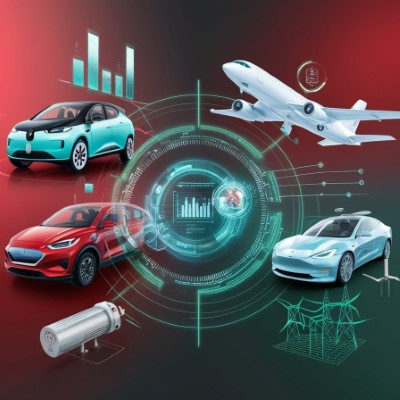Digital Twin Technology
Digital Twin Technology refers to the creation of a digital replica or model of a physical object, system, or process. This digital representation is used to simulate, analyze, and optimize the performance and behavior of its real-world counterpart in real time. The digital twin can incorporate data from sensors on the physical entity to mirror its actual state, behavior, and performance.
Key Components
- Physical Object: The real-world item being modeled, such as a machine, building, or process.
- Digital Model: The virtual representation that mimics the physical object’s characteristics, behaviors, and dynamics.
- Data Connection: Continuous flow of data from the physical object to the digital model through sensors and IoT devices.
- Analytics: Tools and algorithms used to interpret data from the digital twin, providing insights and predictions.
Benefits
- Predictive Maintenance: Identifying potential issues before they become critical.
- Performance Optimization: Enhancing the efficiency and effectiveness of operations.
- Design and Development: Improving product designs and processes through simulation.
- Cost Reduction: Lowering maintenance costs and reducing downtime.
- Enhanced Decision-Making: Providing data-driven insights for better decisions.
Example: Siemens and Gas Turbines
Context
Siemens, a global engineering and manufacturing company, uses digital twin technology extensively in their operations, particularly for managing and optimizing gas turbines used in power plants.
Implementation
- Physical Object: A gas turbine in a power plant.
- Digital Twin Creation: Siemens creates a detailed digital model of the turbine, incorporating its physical properties, design specifications, and operational parameters.
- Data Connection: The turbine is equipped with various sensors that collect data on temperature, pressure, vibration, and other critical parameters. This data is continuously transmitted to the digital twin.
- Real-Time Monitoring: The digital twin provides a real-time view of the turbine’s performance, identifying any deviations from normal operating conditions.
- Predictive Analytics: Using advanced algorithms and machine learning, the digital twin analyzes the data to predict potential failures and maintenance needs. For example, if the data indicates unusual vibration patterns, the system can predict a bearing failure and schedule maintenance before a breakdown occurs.
- Optimization: The digital twin also helps in optimizing the turbine’s performance. By simulating different operating conditions and configurations, Siemens can identify the most efficient way to run the turbine, reducing fuel consumption and emissions.
Benefits Achieved
- Reduced Downtime: By predicting maintenance needs and preventing unexpected failures, Siemens minimizes turbine downtime.
- Cost Savings: Proactive maintenance and performance optimization lead to significant cost savings in operations.
- Improved Performance: Continuous monitoring and simulation allow Siemens to operate the turbines at peak efficiency, enhancing overall productivity.
Other Examples
- Automotive Industry: Companies like Tesla use digital twins for their vehicles to monitor performance, update software, and predict maintenance needs.
- Manufacturing: Factories use digital twins of their production lines to optimize workflows, improve quality control, and reduce operational costs.
- Smart Cities: Digital twins of urban infrastructure help in planning, monitoring, and managing city resources more efficiently.
Conclusion
Digital Twin Technology is a transformative approach that bridges the physical and digital worlds, providing comprehensive insights and optimizing the performance of complex systems. By leveraging real-time data and advanced analytics, digital twins enable proactive maintenance, enhance efficiency, and support informed decision-making across various industries.
